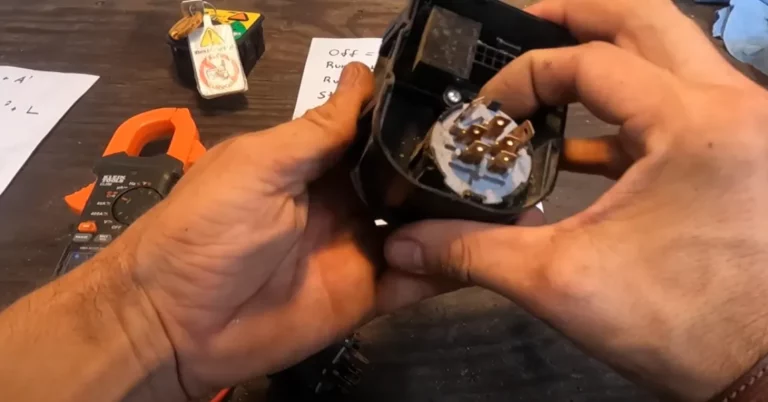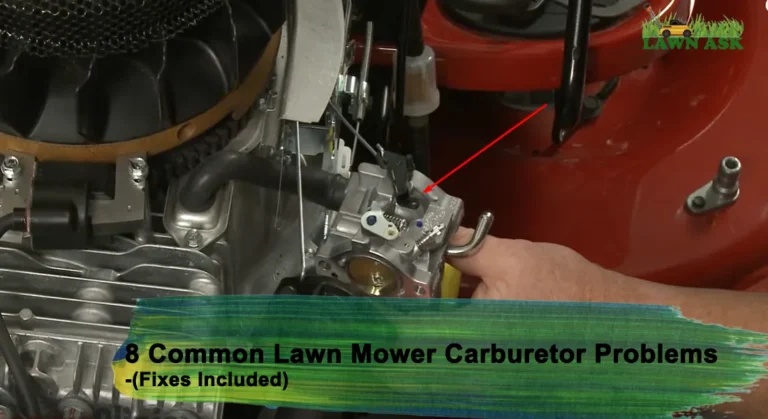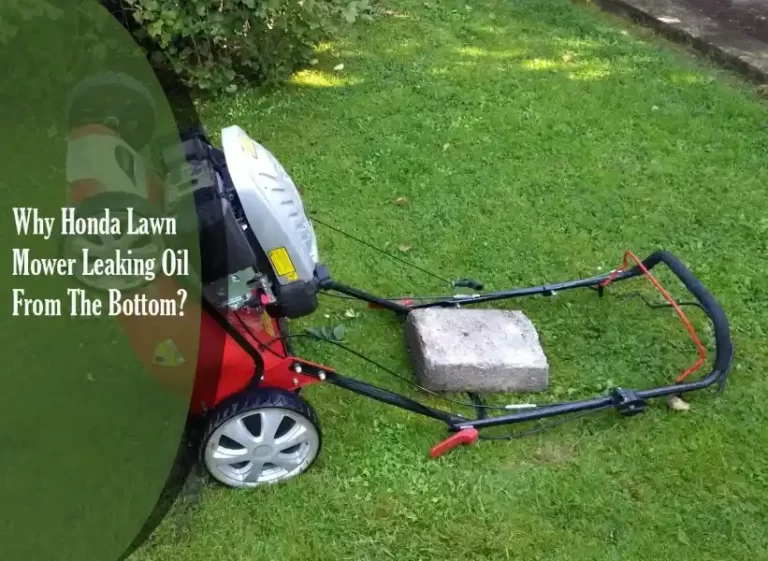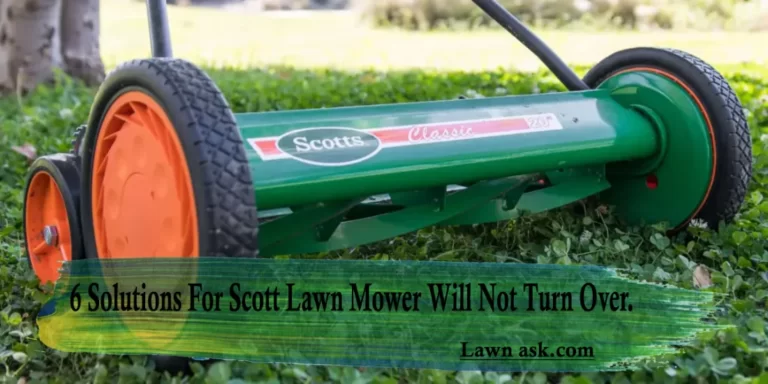Solving Lawn Mower Choke Issues (Easy Way Explained!)
Every combustion engine has a choke. Lawn mower choke allows a higher amount of fuel to be mixed with a restricted low amount of air for a rich mixture.
This article will provide detailed information about choke in the lawn mower, types of choke, how to use them, and common issues associated with them.
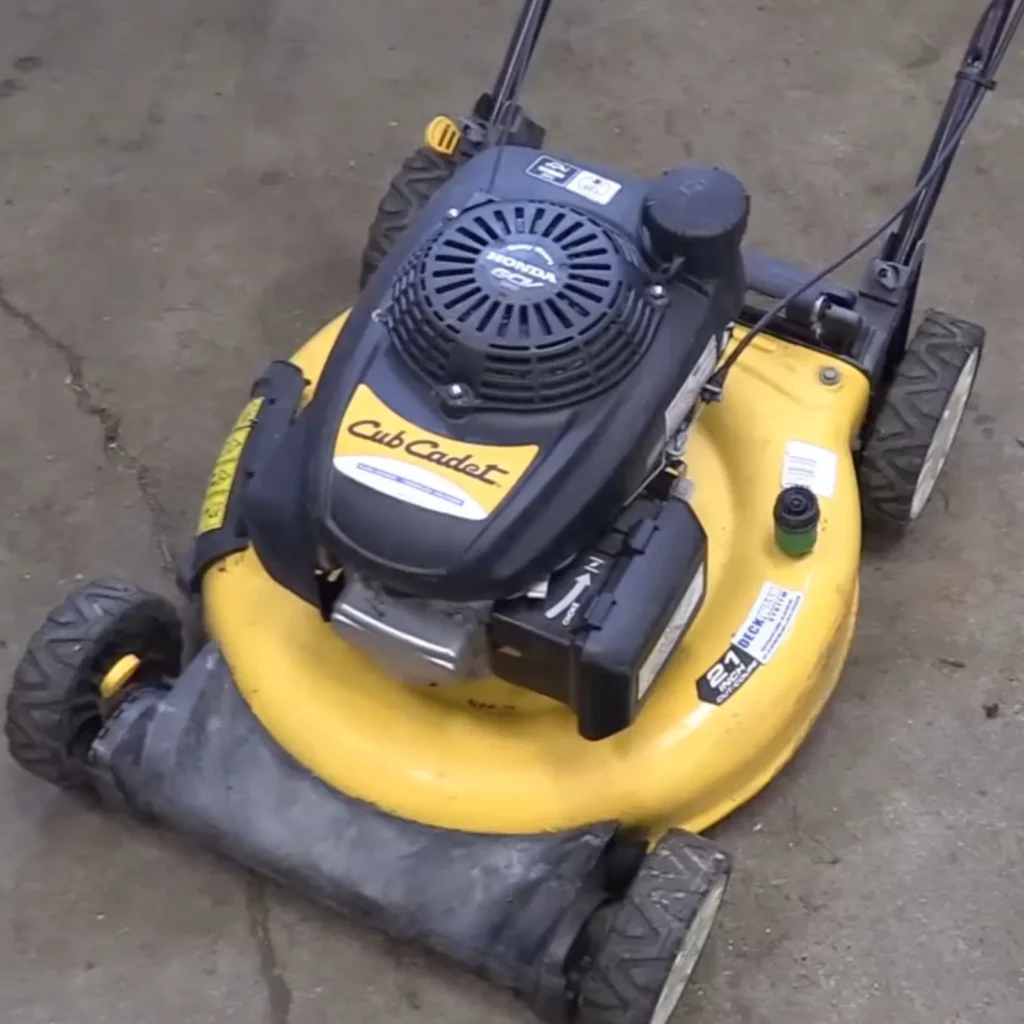
What is Choke on a Lawn Mower?
The “choke” on a lawn mower is the literal meaning of the word. To choke is to restrict airflow.
A lever controls the choke settings and the choke controls the amount of air that it lets through.
Cold air doesn’t vaporize the fuel fast enough for the engine to run smoothly. Turning the choke on is a great way to let the engine heat up.
When it’s on it reduces the air from reaching the carburetor. What happens then is the engine gets a richer fuel mixture and runs better when it is cold.
After it gets warmer you can turn off the choke and the engine will run normally.
Types of Lawn Mower Choke and How They Work
To understand and get a deeper knowledge we need to look at the different types of chokes available on lawnmowers. There are 3 types; Manual, automatic, and electric chokes.
Manual Choke
Like the name suggests a manual choke needs manual operation. The user has direct control over the mechanism. Most small engines use manual chokes.
It uses a lever or knob near the carburetor or engine. It has two positions or modes; chock and run. This is the simplest in design and operation and the most reliable among the three.
To choke airflow, you need to pull the level outwards and to release it push it back. Manual chokes are mechanical.
Manual chokes offer precise control and you can avoid flooding the with excessive fuel by releasing it when the engine is warm enough.
Automatic Chokes
These handle choking based on engine temperature. The included thermostat inside the engine stops the choke mechanism when the engine is hot.
As it warms up the butterfly choke valve gradually opens with the help of a spring and when the engine is cold the choke valve closes to reduce the airflow.
One of the main advantages of an automatic choke is hands-free usability. There is a gradual change in the amount of air it lets through. This ensures a smooth transition from a rich mixture to an optimal one.
A lot of the new lawnmowers use automatic chokes. It is a very easy and effective solution for newcomers who don’t know what they are doing.
Electric Chokes
Electric chokes are also automatic. We can put it under a subtype of the automatic chokes but these can heat the element controlling the choke valve.
These introduce an electrical heating element such as a small resistor or coil; i.e. Nichrome wire into the system to control the choke valve’s movement. The engine’s temperature doesn’t affect the airflow here.
As current flows through the resistor, it warms up and determines the movement of the choke valve.
Where Is the Choke on A Lawn Mower?

You can find the choke if you follow the trigger cable to the engine near the carburetor.
For a manual choke, there is a throttle lever on the handle that you need to push down to activate the choke circuit. Then it goes to the primer. There is no primer on automatic chokes.
This video shows where to find the choke and how it operates in detail.
Common Issues with Lawn Mower Chokes (Solutions Added)
Common problems with lawn mower chokes are very easy to deal with. Here are some problems and how you can solve them:
1. Loose or Tight Choke cable
When the lever is difficult to move it is usually because of a deficiency in lubricant. Debris and corrosion also make it hard to apply a choke.
A loose choke indicates a faulty control wire. If the choke doesn’t work at all it is because the wire connection cut off.
Fix: To fix a tight choke clean the choke valve and wire and then spray the whole cable with WD-40.
For a loose choke determine the state of the wire first. Replace the wire if it is broken. In other cases, tightening the valve should take care of it.
2. Choke Lever Seizing Up
This is a big issue with automatic chokes and why veteran mowers don’t like their lawn mower chokes automatic. Without manual control, the automatic choke’s flap gets stuck in different positions.
A stuck chock level results in a loss of control over the mixture in the engine. The engine will struggle to start in cold conditions without adjusting the choke.
You will see excessive stalling and it will run with reduced power and efficiency potentially leading to engine damage. It will also increase the fuel consumption in some cases.
Fix: Fix the alignment of the chock flap to the correct position and apply some lube spray. Replace damaged or excessively worn components including the level, linkage, or cable.
For automatic chokes check if the thermostat is reading the temperature right. If you want more control over the choke mechanism you can install a manual lawn mower choke in the engine.
You can refer to this video here on how to install a manual choke.
3. Choke Fails to Disengage
This issue is a real hassle. After starting the engine and releasing the choke it doesn’t loosen causing the engine to halt.
In automatic chokes, this usually happens because the choke spring doesn’t have enough tension to push the choke open.
Another good reason for this is a bent connection bar that is on the opposite side of the choke valve connected to the thermostat.
Fix: This is mostly hit or miss but replace the choke spring right away. When it loses its tension it can’t push back the choke valve back to the open position.
To fix the bar, get a pair of pliers and reshape it back to the original position as much as you can. Also, reattach it to the thermostat if it’s broken by soldering a part of the bar.
How to Use a Lawn Mower Choke Properly?
You can use the lawn mower choke to start a cold machine by allowing a rich mixture of fuel in it. Let’s see how to use it:
Cold Ignition with a Manual Choke
These are common in older combustion engine lawnmowers. You have to use the choke on the first ignition of the day after a cold night sit-in. Here’s how to start a cold engine with a manual choke:
- Set it to the choke position.
- Pull the starter cord or ignition key.
- Allow the engine to warm up for a few minutes with the choke valve closed so less air enters into the fuel mix.
- Gradually disengage the choke in this order – Choke>Half Choke>OFF.
- Put it in the off position when the engine starts to run and sound smooth.
Starting an Automatic Choke on a Cold Engine
There is no manual input except the ignition. The automatic choke turns itself on when it detects the engine heating up.
By default, the valve of the automatic choke sits on the choke position and gradually pulls itself open as the temperature increases. Another thing the user needs to focus on is keeping the engine running until it starts to run smoothly.
Frequently Asked Questions (FAQs)
Can you choke a lawn mower enough to malfunction?
Leaving the choke on for too long will cause the engine to flood with too much fuel and stall the engine. So yes, you can choke it too much.
Is lawn mower choke bad for its engine?
Not if you keep it under control. It doesn’t damage the engine itself but burns too much fuel if kept on.
How long is safe to have a lawn mower choke on?
Only a couple of minutes. Keep it under 3 minutes and you should be good to go.

